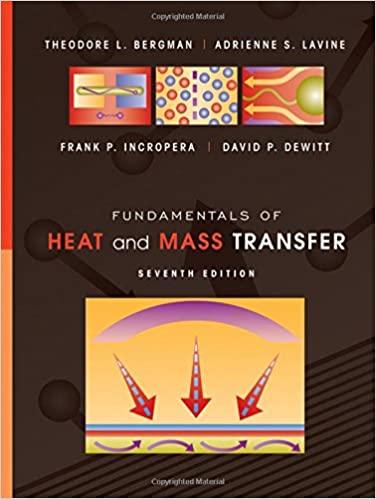Consider the cylindrical bales of hay in Problem 3.82. It is proposed to utilize the microbial energy
Question:
Consider the cylindrical bales of hay in Problem 3.82. It is proposed to utilize the microbial energy generation associated with wet hay to heat water. Consider a 30-mm diameter, thin-walled tube inserted lengthwise through the middle of a cylindrical bale. The tube carries water at T∞,i = 20°C with hi = 200 W/m2 · K.
(a) Determine the steady-state heat transfer to the water per unit length of tube.
(b) Plot the radial temperature distribution in the hay, T(r).
(c) Plot the heat transfer to the water per unit length of tube for bale diameters of 0.2 m ≤ D ≤ 2 m.
Data From Problem 3.82
Large, cylindrical bales of hay used to feed livestock in the winter months are D = 2 m in diameter and are stored end-to-end in long rows. Microbial energy generation occurs in the hay and can be excessive if the farmer bales the hay in a too-wet condition. Assuming the thermal conductivity of baled hay to be k = 0.04 W/m · K, determine the maximum steady-state hay temperature for dry hay (q = 1W/m3), moist hay (q = 10 W/m3), and wet hay (q = 100 W/m3). Ambient conditions are T∞ = 0°C and h = 25 W/m2 · K.
Step by Step Answer:

Fundamentals Of Heat And Mass Transfer
ISBN: 9780470501979
7th Edition
Authors: Theodore L. Bergman, Adrienne S. Lavine, Frank P. Incropera, David P. DeWitt





